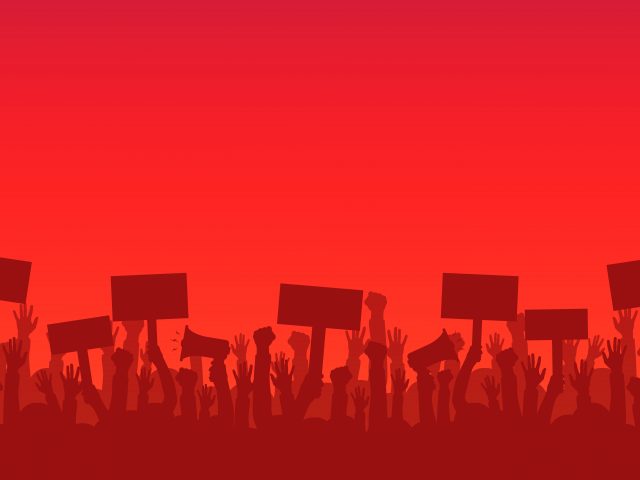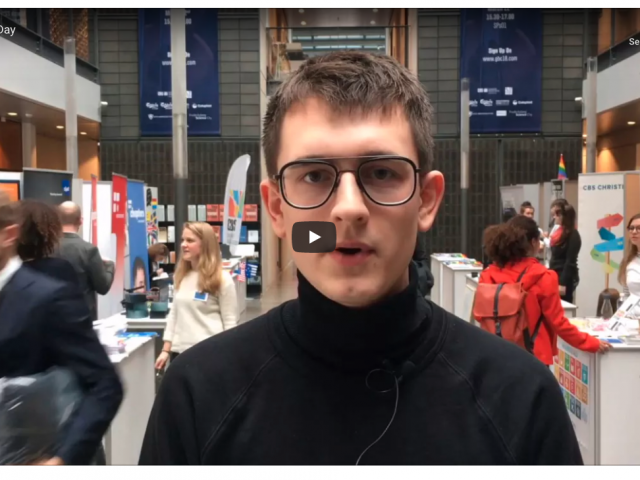Merging, fusion, reorganization? Eight CBS departments are facing restructuring

(Photo: Shutterstock)
More than half of the existing departments at CBS will be affected when the number of departments will be reduced from 14 to 10 or 11. The idea is to strengthen research and teaching, explains Søren Hvidkjær, the dean of research at CBS, who underlines that no one will be laid off. Keld Laursen, member of the Academic Council, and Ole Helmersen, a representative of the researchers at CBS, emphasize the importance of listening to the affected employees’ wishes and concerns regarding the future of their departments.
In late autumn, CBS will have new, but fewer, departments. 14 departments are to be reduced to 10 or 11 departments. The aim is to strengthen and improve both the research environment and the teaching, explains Søren Hvidkjær, the dean of research at CBS.
“It’s important to state that this is not an exercise in saving money. We will have just as many people employed after the reorganization,” he points out and continues:
“However, while departments at CBS are highly productive and successful, the small size of several departments entail a fragility, with a lot of overlap in terms of research or teaching being within the same topic across departments. We would like to balance that overlap, and further strengthen the departments.”
The restructuring will have to be implemented with a respect for the different cultures at the various departments
Keld Laursen, Academic Council
At the moment, Søren Hvidkjær is in dialogue with the Department of Strategic Management and Organization, the Department of Innovation and Organizational Economics, the Department of Accounting and Auditing, the Department of Law, the Department of Business and Politics, the Department of International Economics and Management, the Department of Organization, and the Department of Management, Politics, and Philosophy.
In the news article posted on the 14th of March, on CBS’ intranet, Share, it states that it is not “a fundamental reorganisation of CBS.”
But half of the departments are being affected by the new structure. Which raises the question, how is it not a fundamental change?
“This reorganization could certainly be much more radical. We’ve seen such examples in other Danish universities and no other social science faculty in Denmark has more than six departments. For instance, Roskilde University consists of four departments,” says Søren Hvidkjær and adds:
“But it is important to respect the history of CBS and such a model is not on the table. Still, some individual departments will still be profoundly changed and I recognize that this will directly affect many employees.”
At the moment, Søren Hvidkjær cannot put an exact price on the new structure. It will depend on, which departments are merging, and how many will be physically moving.
Go to the bottom of the article to check the timetable of the reorganization.
Small departments are fragile
One of the reasons why senior management wants to restructure the departments is that it will make the departments more robust. As it is right now, some departments are reliant on too few researchers and administrative staff for supporting the students and ensuring a proper research environment.
“By merging some of the departments, you get a more sustainable mass of departments and thereby a stronger research environment and a better scope for collaborations. Furthermore, departments won’t be in a position where they rely on too few people and place the departments in states of fragility if, for instance, those people move elsewhere, the department is asked to offer new courses, or funding applications fall through,” says Søren Hvidkjær.
Keeping researchers within each department together is something we will prioritize
Søren Hvidkjær, dean of research
Another reason why it, according to Søren Hvidkjær, is a good idea to merge some of the departments, is because of the dialogue between the top management and the departments.
“The large number of departments makes it more difficult to integrate the heads of departments into the leadership of CBS. This is a challenge because senior management cannot make the right decisions for CBS without continual input from heads of departments,” he says.
Even though none of the employees will be laid off, a few head of department positions will cease to exist. However, heads of departments all have fallback positions as professors or associate professors.
Just as the head of departments, the heads of secretariats in the affected departments will be offered other positions within CBS as well.
Remember to listen to the employees
A restructuring of this size raises concerns and uncertainty. However, senior management has made a sparring group consisting of members from the Academic Council and the General Consultation Committee (HSU), which represents the faculty, administration and students, to discuss and take into account the different opinions.
It is important to listen to what the affected personnel have got to say, points out Ole Helmersen, a representative for the researchers at CBS.
“Senior management has to ensure that the restructuring is happening in a way where the employees are being listened to and involved in the implementation process,” he says.
Ole Helmersen will, as a representative, not comment on the decision of reorganizing the departments. Keld Laursen, member of the Academic Council at CBS does see some obvious advantages of merging some of the departments but points out that implementing the new structure will have to be made with respect to the different departments and their cultures.
“I agree that we have some small departments which can be fragile in some ways. It is difficult to be good at everything as a small department when you have to be good at research, have well-functioning study programs, attract external funding, and make yourself visible in society,” he says.
“This being said, the Academic Council agrees that the restructuring will have to be implemented with a respect for the different cultures at the various departments.”
Søren Hvidkjær explains that he is currently talking to heads of departments and research group leaders, as they can offer ideas about how to best conserve well-functioning research environments the best.
“One thing that is important to people is the possibility to stay together physically. Departments at CBS are located in a number of different addresses. Physically locating researchers within each new department at the same place is something we will prioritize,” he says.
Let a thousand flowers blossom
According to Søren Hvidkjær, part of the reason why CBS has so many departments, has something to do with the previous President of CBS, Finn Junge-Jensen.
“The department structure at CBS is a product of decisions made over the years. Finn Junge-Jensen had this dictum of letting a thousand flowers blossom. This has created a lot of entrepreneurial activity at CBS. Centers have evolved, and there’s a lot of bottom up initiatives, which later has turned into individual departments,” he says and then praises the bottom up approach and the initiatives from the researchers. However, he points out that too many small departments are still too fragile.

































































































































Comments